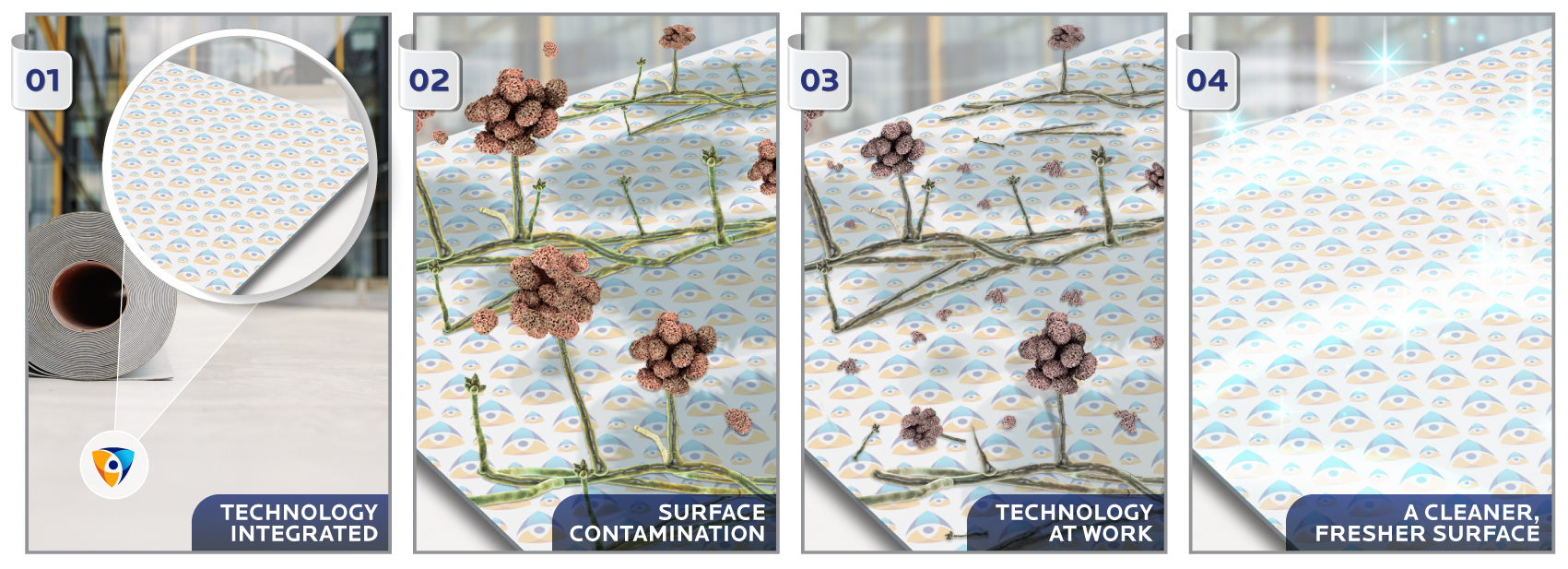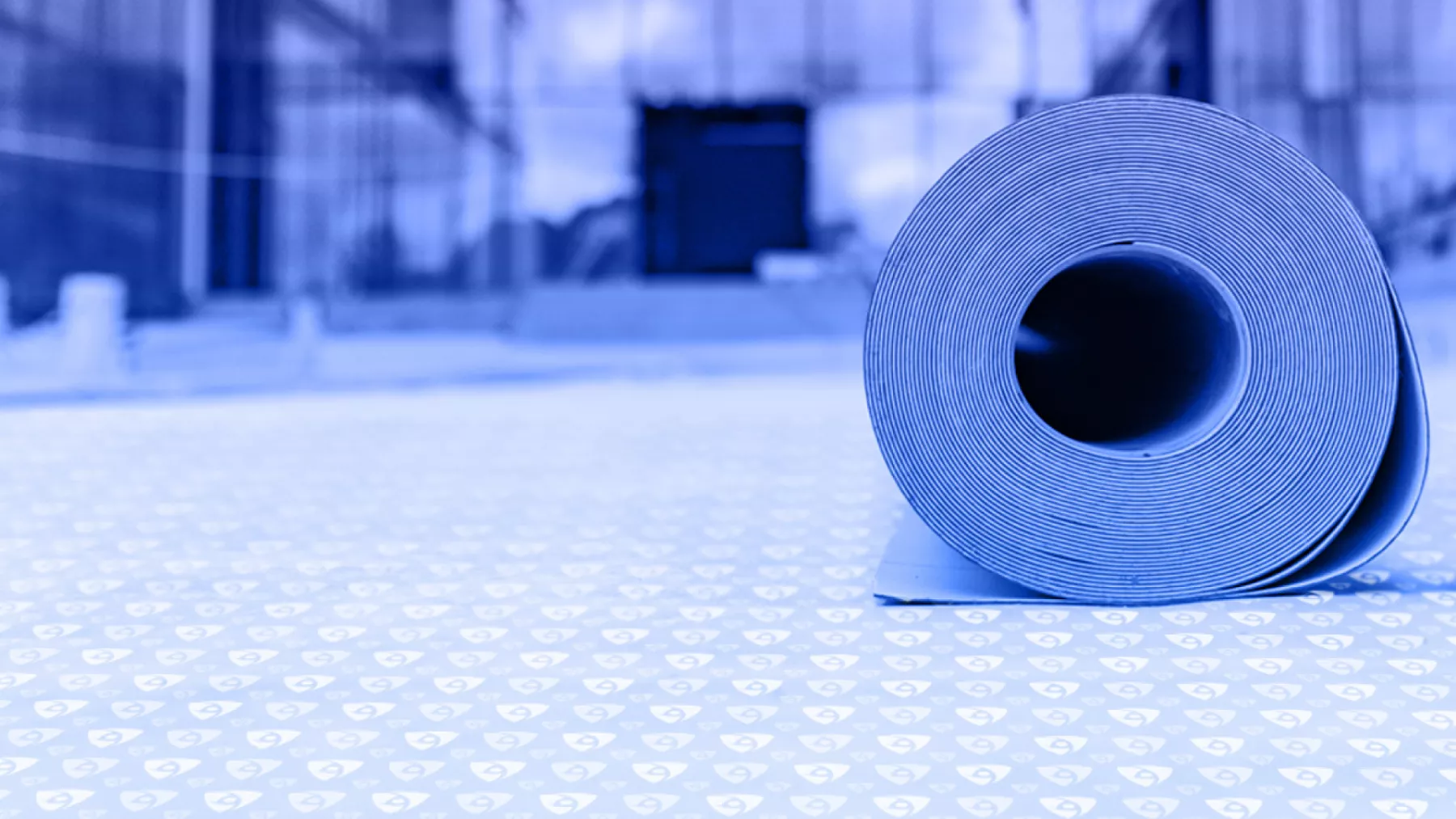What is antimicrobial PVC and why does it matter?
Antimicrobial PVC is a PVC material that resists the growth of microbes such as bacteria, mold, and fungi. The antimicrobial agent can be incorporated into the PVC during manufacturing or applied as a post-treatment coating after the PVC is formed.
This material offers several benefits in various applications where microbial growth can be a concern.
Here are a few examples:
- Healthcare: Often used in medical equipment, hospital furniture, and other healthcare-related products to complement regular cleaning protocols.
- Food industry: Helps maintain a cleaner environment for food preparation, cooking, and storage in hospitality settings and residential kitchens. Additionally, antimicrobial PVC can help extend the durability of food containers, kitchenware and cooking tools, reducing waste and improving sustainability initiatives in the food industry.
- Public transportation: Can provide a cleaner, fresher environment for passengers and staff while offering enhanced durability for high-contact, high-traffic surface areas.
- Construction: Prevents the growth of mold and other microbes in building materials, helping to improve the structural integrity of the building and reducing overall maintenance costs.
Overall, antimicrobial PVC stays cleaner, lasts longer and delivers enhanced product performance and peace of mind in environments where microbial growth is a concern.
8 common problems with PVC roofing
PVC roofing is a popular choice for flat or low-slope roofs due to its durability and resistance to weathering. However, like any roofing material, PVC can experience some problems. Here are a few examples:
Ponding water: This occurs when water pools on the roof's surface and does not drain properly. This can lead to leaks and damage to the roofing membrane over time.
- UV damage: Over time, roofing materials can become brittle and crack due to exposure to ultraviolet (UV) rays from the sun. This can weaken the roofing membrane and lead to leaks.
- Shrinkage: Varying climatic conditions cause the material to shrink. This can lead to gaps in the seams and an increased risk of leaks.
- Thermal expansion: PVC roofing can expand and contract with temperature changes, causing the roofing membrane to warp or pull away from the roof's edges.
- Poor installation: Improper installation can lead to many problems, including leaks, ponding water, and premature ageing of the roofing membrane.
- Mechanical damage: For example, foot traffic, falling debris, or other mechanical stresses. This can lead to punctures and tears on the roofing surface.
- Fading: This problem can occur over time due to exposure to UV radiation. While this does not typically affect the performance of the roofing material, it can impact its overall appearance.
- Microbial growth: Fungi and mold can develop on the surface when moisture is present and the temperature is favorable for their growth. Such growth can result in discoloration, staining, and even structural damage over time.
How do antimicrobial treatments prevent common PVC roofing problems?
Built-in antimicrobial technology protects the roof’s surface from degradation by inhibiting the growth of bacteria, mold and fungi. The ‘always-on’ technology disrupts the cellular processes of microbes on contact, inhibiting their growth and reproduction for the expected lifetime of the material. This prevents the formation of stains, discoloration, and other visible signs of microbial growth on the roofing surface.

Benefits of antimicrobial PVC roofing
Antimicrobial PVC roofing offers several benefits, including:
Enhanced aesthetics and durability
Inherent surface protection from stains and odors caused by microbes
Easier to keep clean and stays cleaner between cleaning
Lifetime performance against microbial growth
Reduces risk of structural damage to a building, leading to decreased maintenance/repair costs
More sustainable alternative to untreated PVC roofing materials
Introducing MicroGuard, an OBPA-alternative for PVC roofing
MicroGuard is a new line of antimicrobial chemistries for PVC roofing applications. The technology utilizes highly effective non-metal chemistries that protect treated products against the deleterious effects of fungal growth.
This innovative solution is part of Microban’s commitment to bringing novel technologies to market with more friendly toxicity profiles than currently available agents. MicroGuard has been developed as a non-leaching antifungal agent composed of active ingredients free from metals. It also offers an alternative to arsenic-based OBPA.
MicroGuard enables manufacturers to deliver more durable PVC roofing, reducing the need for costly repairs and premature replacements. This translates into a significant competitive advantage and a step towards more sustainable building solutions.


